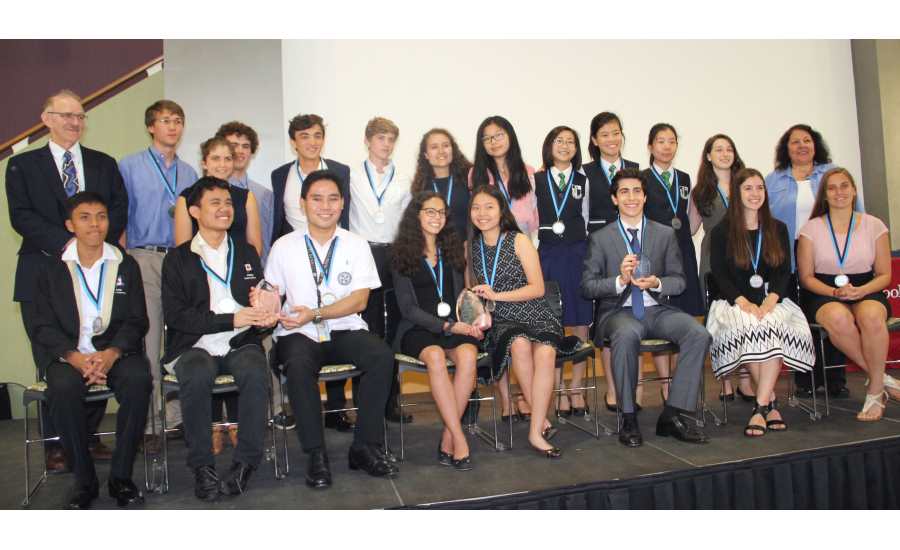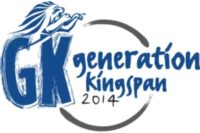Teams of high school students from across the nation and around the world recently showcased their award-winning projects and solutions at the 2017 Spellman High Voltage Electronics Clean Tech Competition. The theme of the competition, held for the first time this year on Long Island and at Stony Brook University, was “Creating a Greener Future.” The nine finalist teams that traveled to Long Island presented their STEM-based solutions and projects for mitigating environmental challenges. The winners of the competition were selected after several rounds of judging. Winners of the competition received monetary awards totaling $30,000.
Plainview-Old Bethpage JFK High School Team “Super Silk” won First Place and $10,000. Team members Mses. Alyssa Iryami’s and Audrey Shine’s project was titled: Utilization of Bombyx mori in the Production of Polymeric Graphene Enhanced Supersilk. The students fed graphene to silkworms and demonstrated that the naturally produced silk was strengthened. They proved that the stronger naturally made silk could be used in many ways including making water filters.
“We were honored to be selected to be in the top 10 and win first place. It was an amazing day, just learning what all these young people have innovated,” said Iryami of team Super Silk.
“Meeting people from the Philippines and Singapore has been amazing. It has been such a journey and a long year since September and we cannot believe we came this far,” added Shine of team Super Silk.
The First Place team will have the opportunity to continue its relationship with a professional mentor, who will advise and assist the team in furthering its work and education. The winning team will also work with the United States Patent Office to get their idea into the real world.
A Second Place award of $7,000 was presented to team “Philippine Science High School-Main Campus” in Quezon City (National Capital Region) in the Philippines – comprised of students Mr. Justine Marcus Opulencia, Mr. Maded Batara III, and Mr.Philippe Gene Bungabong. Their project was titled: Development of an Integrated Online System for the Regulation of Household Electricity Consumption.
Team “Eco-Breathe” student Mr. Jubin Gorji from Pine Crest School, Fort Lauderdale, Florida, received Third Place award of $5,000 for project: A Portable Low-Cost Filtration System For Kerosene Lamps Aimed at Combatting Sick Building Syndrome (SBS) in Low-Resource Regions.
The remaining finalist teams each received $1,000 to help further their research and innovation.
“These students are ambassadors for STEM and I am confident that their compassion, commitment and ingenuity will bring to life how clean tech can make a difference in our world,” said Fotis Sotiropoulos, Dean of the College of Engineering and Applied Sciences at Stony Brook University. “I am highly impressed and so encouraged by their incredible ideas for technologies that can sustain a broad range of communities and populations.”
The 2017 Spellman High Voltage Electronics Clean Tech Competition is hosted and managed by Rockville Centre, New York-based Center for Science Teaching & Learning (CSTL). CSTL is a not-for-profit organization with a mission of encouraging science learning and literacy. Awards were presented at the end of the competition, which was attended by students, parents and educators as well as media. Following the awards, teams attended a reception sponsored by Stony Brook University and later toured the University’s engineering labs.
According to Dr. Loren Skeist, President of Spellman High Voltage Electronics, which was Lead Sponsor of this year’s competition, “Spellman was honored to be able to sponsor this year’s Clean Tech Competition which challenged teams of high school students to develop innovative solutions that reduce waste streams and carbon emissions of buildings, along with the occurrence of ‘sick building syndrome.’”
Before the competition, students visited Spellman High Voltage Electonics to see how science and technology are part of the product research, development and production process.
“The projects that the teams presented demonstrated their ingenuity, creativity and knowledge of science and were truly inspiring. The enthusiasm and comradery was very present, with all of the students interacting and demonstrating their projects for each other. To be competitive, our nation needs more students like these young competitors to gain interest in science and technology,” said Dr. Ray Ann Havasy, Director of The Center for Science Teaching & Learning.
This is the sixth year that CSTL has managed the competition. This year’s entries included 742 students from 330 teams from 26 different countries.
For more information about, CSTL or the 2017 Spellman High Voltage Electronics Clean Tech Competition, visit the Clean Tech Competition website at www.cleantechcompetition.org.

.jpg?height=200&t=1647993410&width=200)

